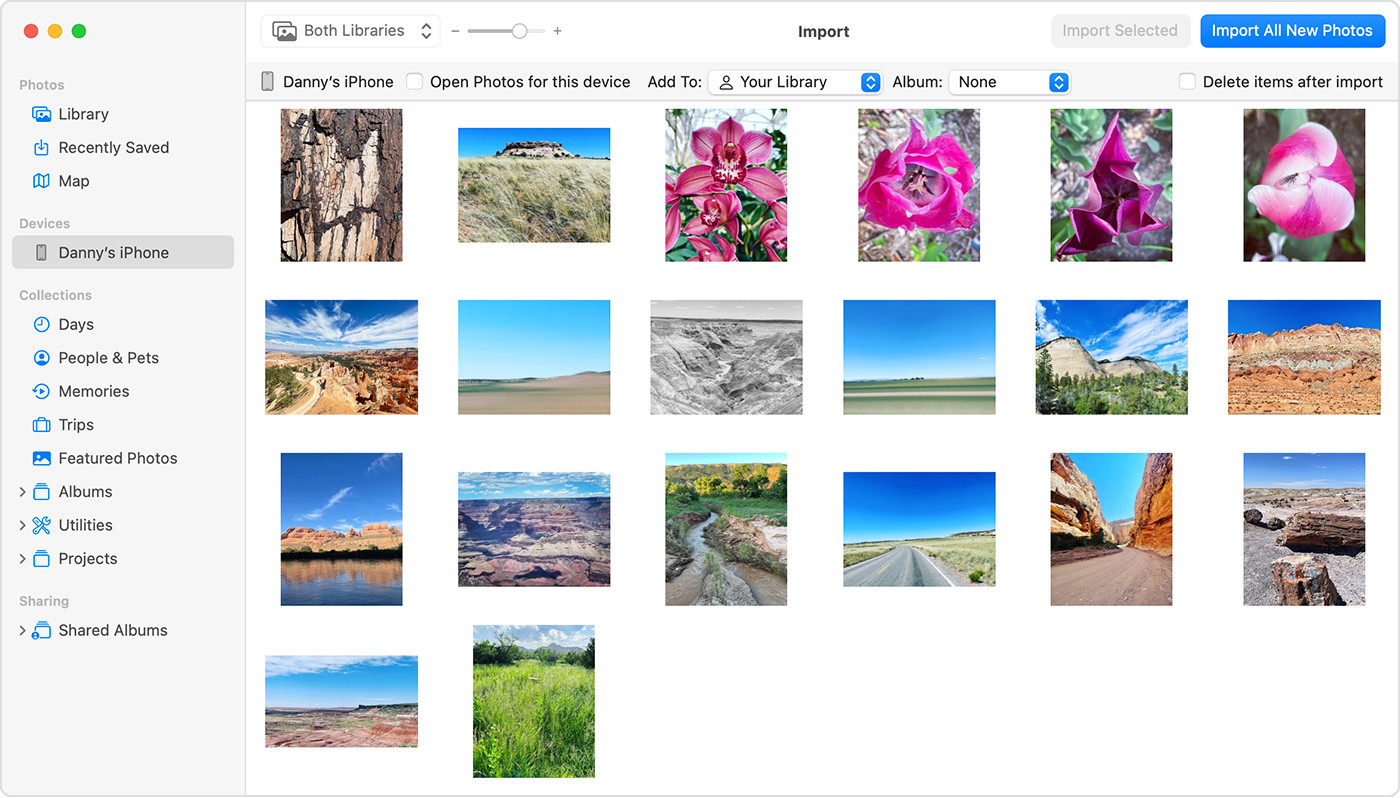Transferring your precious photos and videos from your iPhone to your Windows 10 PC is a common task for iPhone users. Whether you’re looking to back up your memories, free up space on your phone, or edit your photos on a larger screen, importing your iPhone photos to your Windows PC is essential. This guide will walk you through the most effective methods to achieve this, ensuring your photos are safely transferred and easily accessible on your computer.
Method 1: Using iCloud Photos to Sync iPhone Photos to Windows 10
iCloud Photos offers a seamless way to keep your photos and videos synchronized across all your Apple devices, and even your Windows PC. By enabling iCloud Photos, any new photos and videos you take on your iPhone will automatically upload to iCloud and become available on your Windows 10 PC through the iCloud for Windows application or iCloud.com.
To use iCloud Photos for importing your iPhone photos to your Windows 10 PC, follow these steps:
-
Enable iCloud Photos on your iPhone: Go to Settings on your iPhone, tap on your Apple ID name at the top, then select iCloud. Tap on Photos and toggle iCloud Photos to on. Ensure you have enough iCloud storage to accommodate your photo library. You might need to upgrade your iCloud storage plan if necessary.
-
Download and Install iCloud for Windows on your PC: Visit the official Apple support page to download iCloud for Windows and install it on your Windows 10 PC.
-
Sign in to iCloud for Windows: Open iCloud for Windows and sign in using the same Apple ID you use on your iPhone.
-
Select Photos: In the iCloud for Windows app, check the box next to Photos. Click Apply.
 iPhone accessory connection prompt on macOS, asking user to allow connection.
iPhone accessory connection prompt on macOS, asking user to allow connection. -
Access your photos on your PC: Your iPhone photos will now start downloading to your Windows 10 PC. You can access them in File Explorer under iCloud Photos in the Navigation pane.
iCloud Photos ensures that your photos are not only transferred but also kept up-to-date across all your devices. Any edits or organizational changes you make will be reflected everywhere. However, remember that iCloud storage is shared across all iCloud services, so managing your storage is important.
Method 2: Importing iPhone Photos to Windows 10 PC Using a USB Cable
If you prefer a direct and more controlled method, or if you have a large photo library and prefer not to use cloud services, importing your iPhone photos to your Windows 10 PC using a USB cable is a reliable option. This method uses the Apple Devices app and the built-in Photos app in Windows 10.
Here’s how to import photos from your iPhone to your Windows 10 PC using a USB cable:
-
Install Apple Devices App: If you haven’t already, install the Apple Devices app from the Microsoft Store. This app is essential for your Windows PC to communicate effectively with your iPhone.
-
Connect your iPhone to your Windows 10 PC: Use a USB cable to connect your iPhone to your PC.
-
Unlock your iPhone and Trust This Computer: Unlock your iPhone using your passcode. You might see a prompt on your iPhone asking “Trust This Computer?”. Tap Trust or Allow to proceed. This step is crucial for your PC to access the photos on your iPhone.
-
Open the Photos App in Windows 10: The Photos app in Windows 10 usually opens automatically when you connect your iPhone. If it doesn’t, you can manually open it by searching for “Photos” in the Windows search bar.
-
Select Import: In the Photos app, you should see your iPhone listed as a source. Click on it. If the import screen doesn’t appear automatically, look for an Import option within the Photos app, often located at the top right or in a menu.
-
Choose Photos to Import: The Photos app will display all the photos and videos on your iPhone. You can choose to Import all new items or Select items to import. Select the photos you want to transfer to your Windows 10 PC.
 Mac screen showing the photos available for import
Mac screen showing the photos available for import -
Click Import: After selecting your photos, click the Import button. Choose where you want to save the imported photos on your PC if prompted. The default location is usually the Pictures folder.
-
Wait for the Import to Finish: The import process may take some time depending on the number of photos and videos you are transferring. Once completed, you can safely disconnect your iPhone from your PC.
Optimizing Compatibility and Resolving Video Rotation Issues
Sometimes, videos imported from your iPhone might appear rotated incorrectly in the Windows Photos app. To avoid this and ensure best compatibility, you can adjust your iPhone camera settings:
- Go to Settings on your iPhone.
- Tap Camera, then tap Formats.
- Choose Most Compatible. This setting will ensure that your photos and videos are captured in JPEG and H.264 formats, which are widely compatible with Windows.
Conclusion
Importing photos from your iPhone to your Windows 10 PC is straightforward using either iCloud Photos or a USB cable. iCloud Photos offers convenience and automatic syncing, while using a USB cable provides a direct and controlled transfer method. Choose the method that best suits your needs and preferences to keep your precious memories safe and accessible on your Windows 10 PC. Whether you opt for the cloud or a direct connection, transferring your iPhone photos to your computer is a simple process that ensures your digital memories are backed up and ready to be enjoyed.

